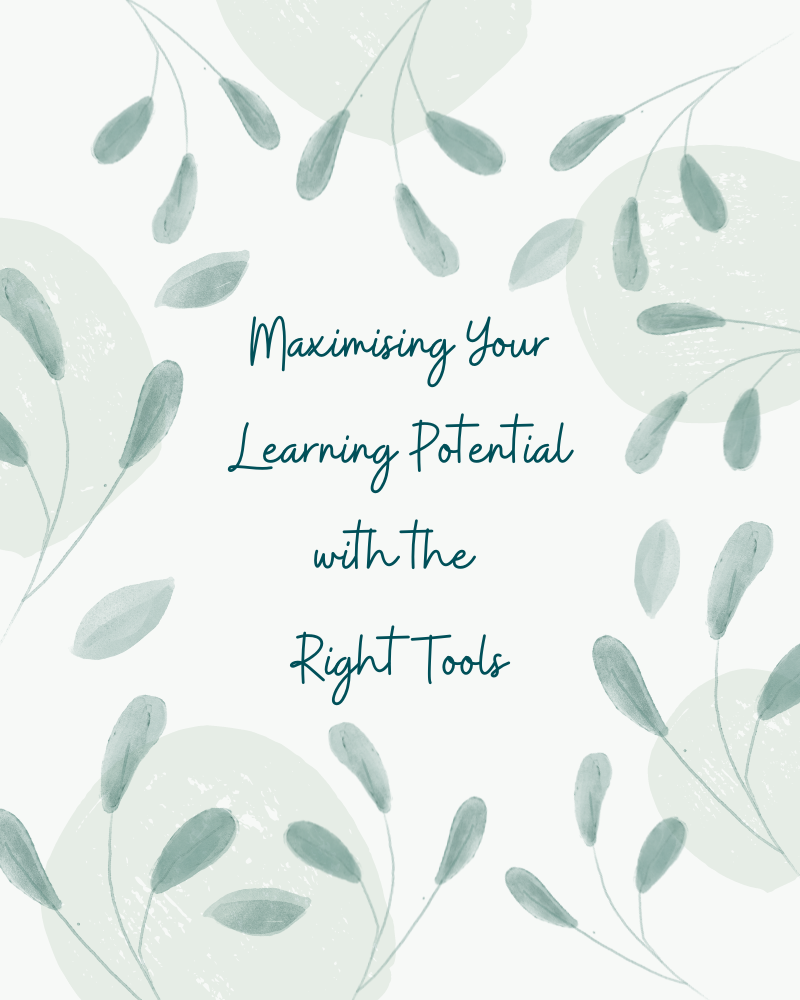As the world of education evolves, it can be difficult to stay up-to-date with the latest tools and strategies. But don’t worry, there is a way to make the learning process easier. By choosing the right tools, you can maximise your learning potential and reach your goals. In this blog post, we’ll discuss how to select the right tools for your learning journey.

Most jobs have certain tools that help you get the job done. As an acupuncturist I use needles in my work. Tools may differ from one job to the next or be exactly the same. My needles differ from those that a doctor will use to take your blood. They also differ from the needles a dressmaker uses to sew a shirt. How we use those needles in our work also differs considerably.
If you didn’t enjoy learning at school then maybe it was down to the way that the teaching was communicated, rather than the subject itself.
Keeping it simple, there are four main learning styles. (There are more complex models out there if this is a topic you’d like to learn more about). They are:
- Visual
- Auditory
- Reading & Writing
- Kinesthetic
Visual Learners
If you’re a visual learner it’s likely that you want to see and observe your subject matter. You prefer to see pictures (or possible video), charts, maps and infographics. It’s important to you that you can picture the topic in your head. You may like to doodle as you learn to reinforce the information, or create lists and notes while in a lesson.
Auditory Learners
If you’re an auditory learner then you want to listen to your subject. You’ll prefer to listen to a lecture or perhaps watch a video, just as long as the soundtrack explains the visuals effectively. This isn’t just one way though. You’ll learn best through participating in discussions and talking the subject through with others.
Reading & Writing Learners
If you’re a reading/writing learner then you want to read about your subject. There is some overlap with the visual learner but you’ll prefer your learning to be text-heavy. You’ll enjoy researching through reading articles, books or the internet. Writing essays consolidates your learning for you.
Kinesthetic Learners
If you’re a kinesthetic learner then you want to be hands-on, learning through doing and employing all the senses. You’ll learn best by physically moving around and trying out or acting out the subject.
Most of our schoolwork was aimed most at Reading & Writing Learners. If this isn’t your preferred style then just remember that you have a choice now! Find a teacher or a class delivery that matches your style.
Online learning works well for visual, auditory and reading/writing learners as long as you get the emphasis right. If you’re a kinesthetic learner you might find it more helpful to find someone who has the skills you want and ask them to walk you through the process. Having a go will work better for you.
Take a moment to consider how you best absorb new information. By understanding your preferred learning style, you can make sure that you choose the best learning experience for yourself. By choosing the right tools, you can maximise your learning potential and get the most out of your education. Don’t be afraid to experiment and find the learning experience that works best for you. Good luck!
